 Fenix Tours
Fenix Tours

Prices and booking => please, scroll down


The Salento peninsula is the heel of the Italian peninsula, located in the heart of the Mediterranean divides and participates to two seas, two winds and a sun that illuminates with ineffable and immutable passion.
“Salentu, lu sule, lu mare, lu ientu" is the mantra and a sort of magic formula, which describes the Salento, in which every Salento dweller identifies him/herself and to which he/she feels to belong.
Sun, sea and wind in this land live in mystical symbiosis creating harmonies and dissonances, combining and transforming colors into landscapes, silences in sounds, smells in flavors, shadows in lights, sensations in emotions.
Something unique: an echo that flees and returns after wandering around the Mediterranean in the past, in the present, in the future therefore forever.
This narrow, intimate strip of land is nestled between the crystal clear waters of the Adriatic and Ionian seas, which embrace and portray, like lovers. And as lovers, the winds chase one other, and without rest they blow every single day in Salento.
You can't talk about Salento unless you live it at the fullest as described by words that express the real and intimate essence: sun, sea, wind.
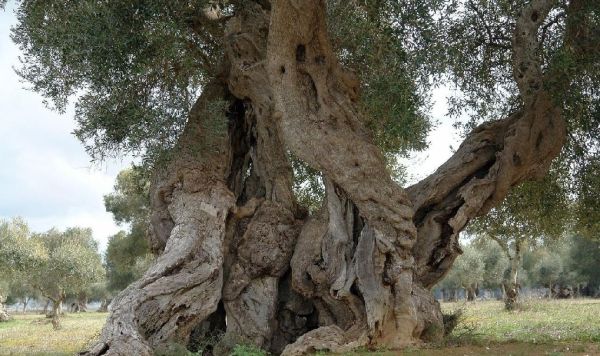
They dominate the landscape. From the red soil, where the roots sink, they rise up to the blue in evocative forms and expressions to conquer the sky, they bend back, but never break down by the invincible forces of wind and sun, while the cicadas, with incessant lament, sing always the same ode. Thus the majestic olive trees of Salento appear: generous, fearless, beautiful warriors.
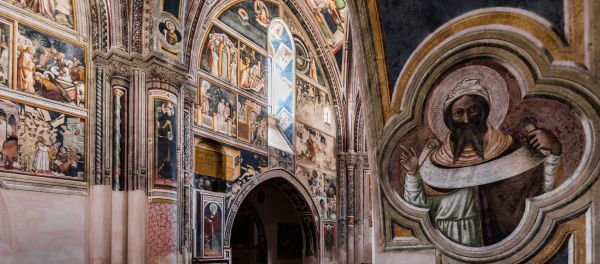

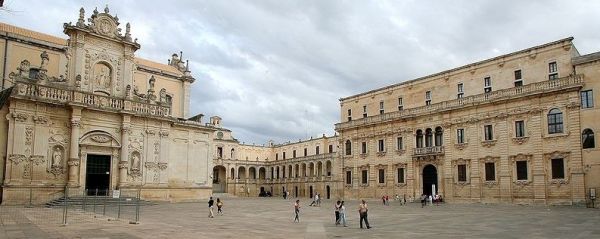
By clicking on the images you open the destination sites
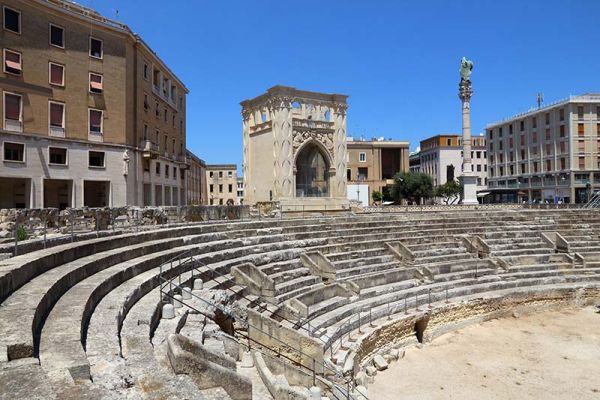
Lying on a plain at the foot of the Salento plateau is Lecce - known as the "Florence of the South" - one of the most interesting cities of the region for its typically seventeenth-century architectural features. Lecce knows how to amaze and fascinate those who wander through the narrow streets of the historic center. Its ancient Messapian origins and the archaeological remains of Roman domination are mixed in fact with the richness and exuberance of the baroque of the churches and palaces of the center.
The architectural development and decorative enrichment of the facades was particularly fruitful during the Kingdom of Naples (XVII century) and characterized the Apulian capital during this period with a great development in the construction of buildings, monuments and aristocratic palaces characterized by a sumptuous and rich ornamental and architectural scenography so original that it deserved a more precise definition: "Baroque of Lecce". A completely new style that flourished for the utilization of local Lecce stone, a type of ductile and mouldable limestone material, easy to inlay and with warm colors so that the imaginative and meticulous work of sculpture was facilitated. The characteristic of Lecce baroque buildings is their playfulness: overflowing baskets of all kinds of fruits, floral compositions with imaginative geometric solutions, skates that dance and sing in a pleasure choreography.
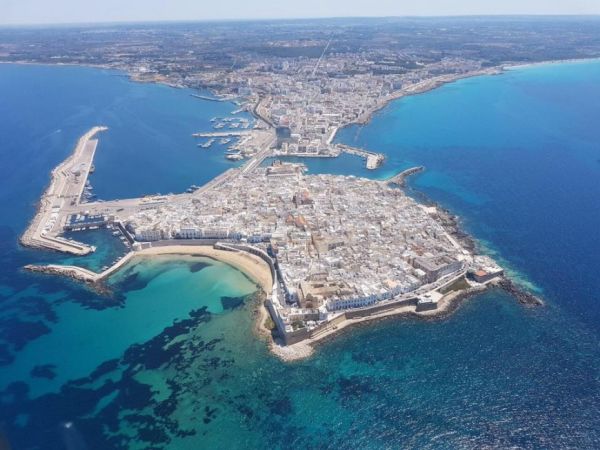
Gallipoli, in Puglia, for its inexhaustible charm, is also known as the "Pearl of the Ionian". The meaning of the name of Gallipoli is ‘beautiful city’, lying as if it were a mirage on the Ionian sea. Along the narrow streets of the village, the wind emanates the scent of spirituality. The ancient village, perched on an island of limestone origin, is connected to the mainland and the new city by a twentieth-century arched bridge, recently flanked by another bridge towards the harbor. The walls, the ramparts and the towers, which once protected the city from invaders, today shelter it from storm surges giving it a charm of other times. Near the historic center with its cobbled streets from which often a slice of the sea flickers, it is worth taking a look at the fish market, located in the original moat of the imposing castle, to contend with the Gallipoli inhabitants the catch of the day.
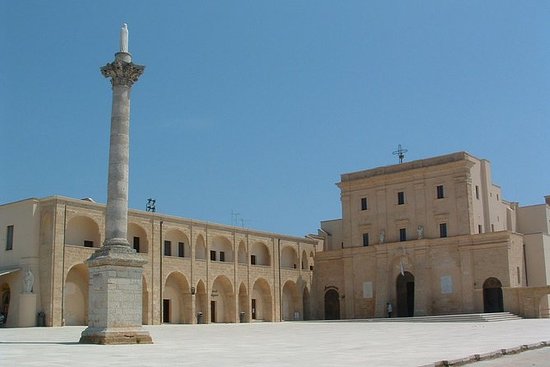
Leuca, end of the world, end of the earth that becomes peninsula, where everybody must choose, above the infinite staircases overlooking two seas, the Adriatic and Ionian ones, that mix in perennial conflict. Leuca has no other function than that: no sinking blinding ridges, no beaches and marine ravines of divine transparency, no nineteenth-century villas of the Salento nobility, the nearby Pescoluse, "Maldives of Salento", "caseddhi" peasant. Only the choice between two watery hemispheres that give birth to everything, there in the waves in front of the viewer, light and sinister crests that stretch like rubber at this moment for all the moments of life. We are here to choose, in Leuca «de finibus terrae», as Latins used to say, in Leuca the end of all lives.

Otranto (Hydruntum at the time of the Romans, Utràntu in the Salento dialect) is one of the most beautiful cities of Southern Adriatic, thanks to its remarkable artistic heritage, its monuments, its suggestive alleys, its splendid sea, its white beaches, and its beautiful coasts. Otranto is located in the most eastern part of Italy, and is therefore nicknamed the "Gate of the East" and for many centuries it was the major political, cultural and commercial center (thanks also to the activity of its port) of the "Terra d'Otranto”, which today corresponds to Salento. The charm of the easternmost city of Italy is easily perceived: the sight of its ramparts, the subdued trampling of stone-paved streets, the intersection with the granite balls of the Saracen bombards, the intact air of a heroic story that exceeds the laws of time; everything takes us back to the crossroads of cultures and arts that at the same time marked the fortune and drama of Otranto. In the cathedral, an authentic masterpiece of architecture raised from 1080 to 1088, there the ambience of the early Byzantine Christian church of Ravenna, S. Apollinare in Classe; the crypt with its 42 columns looks like a miniature of the "Blue Mosque" of Constantinople. And still the castle whose reinforcement made Federico II of Svevia, the Byzantine church of San Pietro and close by the Alimini lakes.
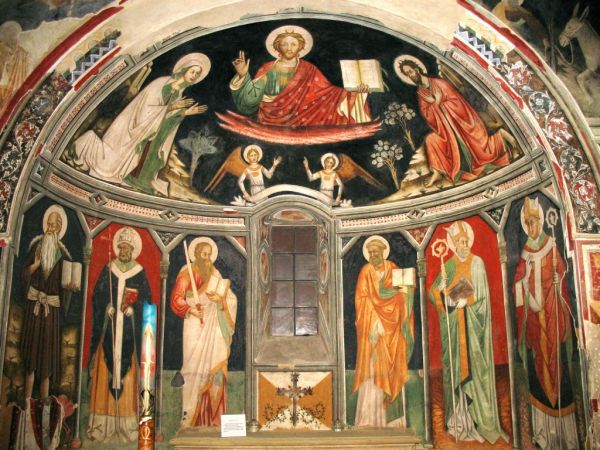
The beat of the tambourines marks the time in Galatina, where art and faith meet the taranta and one of the most beautiful frescoed churches in Italy. From the three gates of the old city, Porta Luce, Porta Nuova and Porta dei Cappuccini, the narrow streets of the old town branch off, where arcades and eighteenth-century buildings adorned with imposing portals and balconies swarm up to subside before the majestic Basilica of Santa Caterina d'Alessandria , true treasure case of faith. Here Galatina reveals an artistic splendor that began in the 14th century with the Orsini del Balzo. On the edge of the historic center of Galatina, the Basilica of Santa Caterina d'Alessandria is a treasure case of art preserving magnificent frescoes and blends multiple architectural styles, from the Romanesque to the Gothic, from the Norman to the Byzantine, a marvelous jewel of architecture comparable to the Basilica di Saint Francis of Assisi for the value of his pictorial cycles.

Located on a hilly area in the northern Salento at the border between the Murge of Brindisi and the Tavoliere of Lecce, it received the title of city in 1951. An important Messapian and later Roman center, the city was renown during the Middle Ages for its Jewish community. In fact, between the eighth and tenth centuries, the city of Oria reached its maximum cultural splendor. His prestige was due to the schools of his Jewish community. Among the best known teachers of Oria, Amittai, the nephew Amittai ben Shefatiah and the doctor Shabbetai Donnolo. Donnolo, thanks to his knowledge and his uncommon expertise, anticipates the archiator, a typical figure of the late Middle Ages. Amittai, Shefatiah, Amittai ben Shefatiah, Shabbatai ben Abraham Donnolo and Ahimāz ben Paltiel have produced a large amount of sources useful for the reconstruction of mystical thought, philosophy and Jewish mentality between the ninth and tenth centuries. The Jewish presence favored trade with the Fatimid Imamate, as they had contacts with their Egyptian and North African and in Sicilian Jewish communities.

Please do not forget to read the Terms & Conditions before booking. The reservation is valid after the payment of the advance or the full amount.
![]() For the same tour there are two prices based on the number of people. For groups of more than 8 people, please contact us.
For the same tour there are two prices based on the number of people. For groups of more than 8 people, please contact us.
 After deciding which excursion you want to do, click on the booking button that will open a partially pre-filled e-mail. You must indicate the tour, the date, the number of participants and your special requests. Probably it will take more than one e-mail to define the excursion but as soon as you receive our confirmation email, you can make the payment (in advance or in full).
After deciding which excursion you want to do, click on the booking button that will open a partially pre-filled e-mail. You must indicate the tour, the date, the number of participants and your special requests. Probably it will take more than one e-mail to define the excursion but as soon as you receive our confirmation email, you can make the payment (in advance or in full).

To make payment after clicking down payment or full payment button, a new window will open with several button

The upper buttons let you choose whether to pay with your Paypal account (if you have one), by credit card or any other online payment method existing in your country that is affiliated with Paypal. This alternative changes depending on the country.



If your currency is not the euro (€), it is advisable to pay via the Wise or XE platforms. Paypal applies commercial exchange rates (those of the bureaus of exchange for example) very unfavorable, while Wise and XE apply the official rates with very low fees. Simply open a Wise or XE account and make the payment via the mobile app or PC by making the transfer to the bank account of Fenix Tours. The bank details will be communicated to you in the confirmation e-mail

The balance can be paid either with Paypal, Wise and XE or at the latest, at the start of the tour by credit card or cash (euro).

Land between two seas, Salento is one of the most sought after destinations, thanks to the enchanting coasts and seas, protected natural areas, ancient farms surrounded by olive groves and dry stone walls, places of undisputed artistic and cultural value and a cuisine rich in recipes and delicious typical products. From Lecce to Gallipoli, from the Adriatic coast to the Ionian coast we discover between "lu Sule, lu Mare, lu Ientu" the most beautiful beaches and not only of Salento.
Lecce, also known as the "Florence of the South" 11 kilometers from the sea, the Apulian capital is a true masterpiece of the Baroque. The noble palaces and the facades of the churches embroidered in white stone, the famous Lecce stone, are a clear example of the art of the seventeenth century.
Santa Maria de Leuca is the southernmost point of Puglia, where the waters of the two seas that bathe it cross. Otranto, located in the easternmost point of Italy is one of the most characteristic villages of Salento. Gallipoli the "Beautiful City" has beaches, nightlife and the beauty of the village that exert a charm from which it is difficult to resist.
To welcome the visitor at the gates of Galatina is the "Lamp without light". From here you enter the historic center, passing through arcades and arches and eighteenth-century palaces until you get to the heart of the city center, in front of the Basilica of Saint Catherine of Alexandria, rare example of Gothic architecture in Salento.
And finally Oria, which dominates from the top of its medieval castle the northern part of Salento and was famous in the Early Middle Ages for the presence of a thriving Jewish community.
One day would be enough to visit one or two locations just briefly described, so to you the choice of places you want to visit.
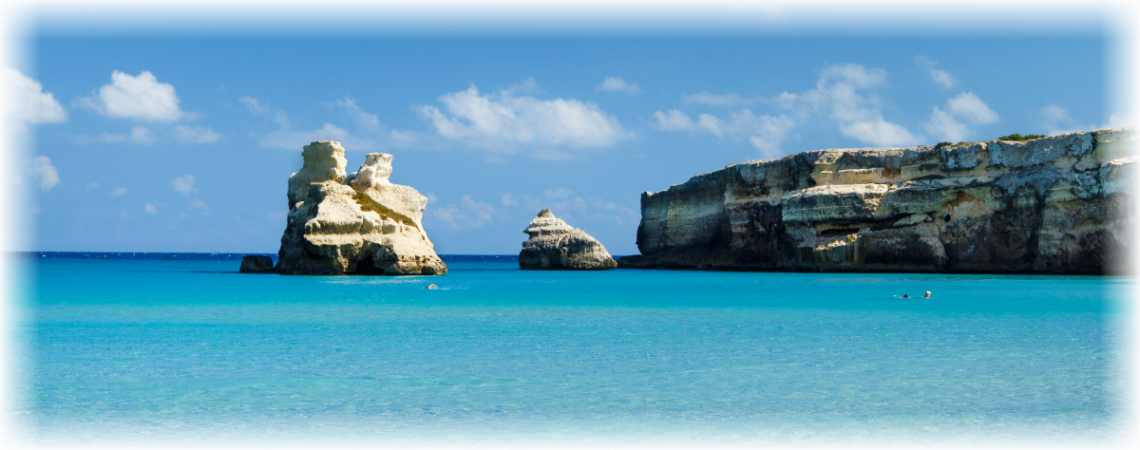
| 1-3 people | 4-7 people | ||||
| Full Price | Down Payment | Balance | Full Price | Down Payment | Balance |
| 800 € | 240 € | 560 € | 1120 € | 336 € | 784 € |

Land between two seas, Salento is one of the most sought after destinations, thanks to the enchanting coasts and seas, protected natural areas, ancient farms surrounded by olive groves and dry stone walls, places of undisputed artistic and cultural value and a cuisine rich in recipes and delicious typical products. From Lecce to Gallipoli, from the Adriatic coast to the Ionian coast we discover between "lu Sule, lu Mare, lu Ientu" the most beautiful beaches and not only of Salento.
Lecce, also known as the "Florence of the South" 11 kilometers from the sea, the Apulian capital is a true masterpiece of the Baroque. The noble palaces and the facades of the churches embroidered in white stone, the famous Lecce stone, are a clear example of the art of the seventeenth century.
Santa Maria de Leuca is the southernmost point of Puglia, where the waters of the two seas that bathe it cross. Otranto, located in the easternmost point of Italy is one of the most characteristic villages of Salento. Gallipoli the "Beautiful City" has beaches, nightlife and the beauty of the village that exert a charm from which it is difficult to resist.
To welcome the visitor at the gates of Galatina is the "Lamp without light". From here you enter the historic center, passing through arcades and arches and eighteenth-century palaces until you get to the heart of the city center, in front of the Basilica of Saint Catherine of Alexandria, rare example of Gothic architecture in Salento.
And finally Oria, which dominates from the top of its medieval castle the northern part of Salento and was famous in the Early Middle Ages for the presence of a thriving Jewish community.
The two-day excursion is not enough to visit all the places just briefly described, so the choice of the places you want to visit is up to you.

| 1-3 people | 4-7 people | ||||
| Full Price | Down Payment | Balance | Full Price | Down Payment | Balance |
| 1280 € | 384 € | 896 € | 1792 € | 538 € | 1254 € |

Land between two seas, Salento is one of the most sought after destinations, thanks to the enchanting coasts and seas, protected natural areas, ancient farms surrounded by olive groves and dry stone walls, places of undisputed artistic and cultural value and a cuisine rich in recipes and delicious typical products. From Lecce to Gallipoli, from the Adriatic coast to the Ionian coast we discover between "lu Sule, lu Mare, lu Ientu" the most beautiful beaches and not only of Salento.
Lecce, also known as the "Florence of the South" 11 kilometers from the sea, the Apulian capital is a true masterpiece of the Baroque. The noble palaces and the facades of the churches embroidered in white stone, the famous Lecce stone, are a clear example of the art of the seventeenth century.
Santa Maria de Leuca is the southernmost point of Puglia, where the waters of the two seas that bathe it cross. Otranto, located in the easternmost point of Italy is one of the most characteristic villages of Salento. Gallipoli the "Beautiful City" has beaches, nightlife and the beauty of the village that exert a charm from which it is difficult to resist.
To welcome the visitor at the gates of Galatina is the "Lamp without light". From here you enter the historic center, passing through arcades and arches and eighteenth-century palaces until you get to the heart of the city center, in front of the Basilica of Saint Catherine of Alexandria, rare example of Gothic architecture in Salento.
And finally Oria, which dominates from the top of its medieval castle the northern part of Salento and was famous in the Early Middle Ages for the presence of a thriving Jewish community.
The three-day excursion would allow you to visit all the places just briefly described in the land of the two seas.

| 1-3 people | 4-7 people | ||||
| Full Price | Down Payment | Balance | Full Price | Down Payment | Balance |
| 1680 € | 504 € | 1176 € | 2352 € | 706 € | 1646 € |